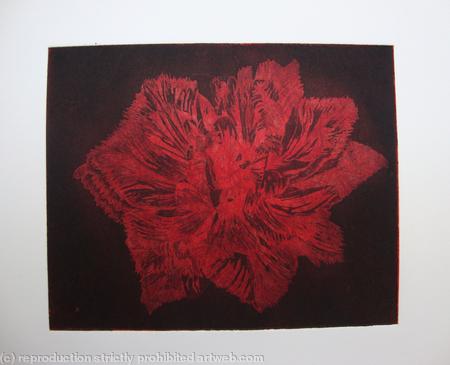Whether you are a complete printmaking or etching novice or someone possessing a certain level of familiarity with these processes, you could be forgiven for being confused about the term ‘aquatint’ and precisely what it means.

Aquatint, in a nutshell, is an intaglio printmaking technique, closely related to etching, that enables the creation of an extremely wide range of tonal effects.
However, while etching is generally considered to be about the production of incised lines in a metal plate — with these lines then holding the ink that allows an image to be printed on paper — aquatint is all about creating more tonal and ‘textured’ areas in a final print.
This, in turn, lends itself to very different results on the paper – from the lightest greys to the deepest blacks, depending on what tones and textures the artist is attempting to achieve.
So, how does aquatint actually work?
The most obvious thing that aquatint and etching have in common is that they both belong to the intaglio family of printmaking techniques. In other words, they both work through the incision of a design or image onto the plate surface, with this incised design or sunken area then holding the ink that is subsequently transferred onto paper when the plate is put through the printing press.

Aquatint departs from etching, though, in that it entails the plate being covered with a porous ground of fine articles of acid-resistant material. Such acid-resist is melted slightly onto the plate by heating, before the plate is immersed in an acid bath, as is the case in etching.
The acid then eats into the metal surrounding the particles, to make possible the kind of tonal effect in the final print that the artist would not be able to achieve by depending on etched lines alone.
While it’s by no means the only type of aquatint, the most common type is powdered rosin, which is normally applied using an aquatint box. It is inside this box that a cloud of rosin is made, with the plate subsequently placed inside the box and left there until it is entirely and evenly coated with dust. Between 35% and 65% coverage should give you the results you need.
What’s the point of pursuing this technique?
If you have ever gazed at etchings on paper that evidently do not depend solely on etched lines — due to areas of them more closely resembling watercolour drawings or wash drawings — and wished to achieve the same effects in your own works, aquatint is something you ought to know about.

After all, the above process just covers the basics of aquatint. Imagine what an infinite range of tones and effects you could create in your prints by experimenting with the specific parts of the plate that you expose to the acid, how long you leave the plate in the acid for each time, and what strength of acid you use.
This doesn’t even touch on such things as how you might use scraping and burnishing to further alter the tones of your prints, and how line etching can be combined with aquatint to add greater variety, interest and definition.

I mentioned above, the idea of only exposing certain parts of your plate to the acid at a given time, and you might be wondering how, exactly, you do that. Well, it can be as simple a case as using varnish — commonly referred to as ‘stop-out varnish’ — to ‘stop out’ those parts of the plate that you don’t want the acid to bite into.
By sometimes stopping out certain areas for certain stages of the biting of your plate, and sometimes not, you can further expand the astounding range of visual effects the aquatint process makes possible in your prints.
Don’t wait any longer to explore the possibilities!
There’s one more important point to make about aquatint before you embark on it; this is an inherently complex process, likely to entail considerable trial and error.
As a result, then, I would urge you not to become too stressed about achieving a specific end result with your aquatint experimentations.
Instead, enjoy the process of trying out and observing the outcomes from different aspects of aquatint, etching and perhaps combinations of the two — and don’t hesitate to share your own thoughts in the comments section below.
Related articles:







